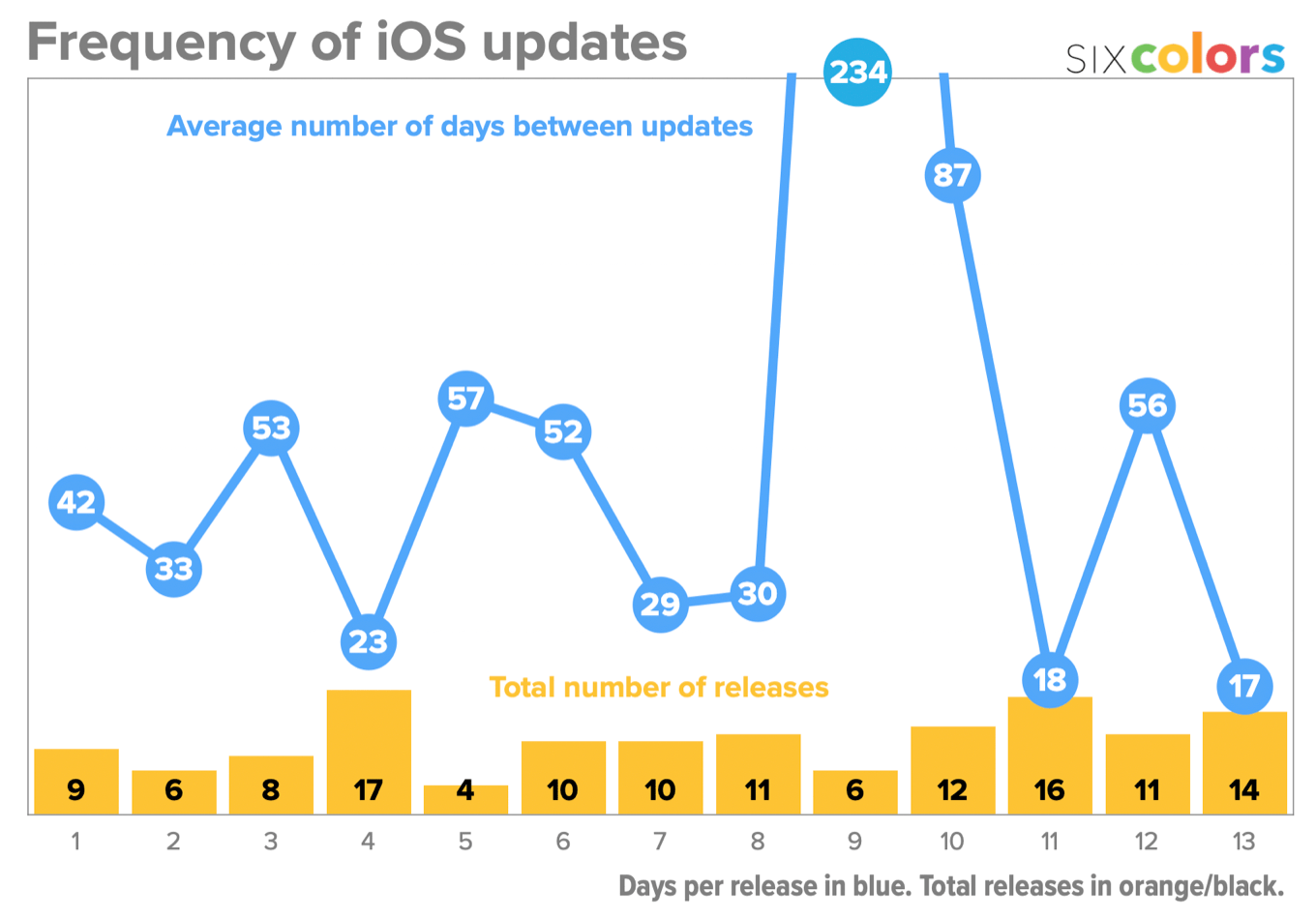By Jason Snell
May 22, 2020 1:24 PM PT
Last updated July 21, 2020
Fun With Charts: The march of iOS software
Note: This story has not been updated since 2020.
This week’s charts tell the story of how Apple rolls out releases of software for the iPhone, iPod touch, and iPad—and when the last update of that operating-system cycle finally shipped.
In the beginning, a new version of the iPhone OS arrived in the early summer (as did new iPhones). Since 2011 it’s been an affair for the fall, as Apple moved to a schedule where it announces the new operating system at WWDC in the summer and ships the final version in September—at least, since 2012.

The all-time champions are iOS 9 and 10, mostly owing to a GPS bug-fix update for a handful of models that forced Apple to dig into source code of both versions to release a fix. (Hence iOS 9’s chart-busting average number of days between updates, below.) Apple has also released three updates to iOS 12 thus far in 2020, including one this very week!

Keying off of my macOS version chart, I thought I’d calculate the number of total updates each version saw across its lifetime and the average pace of those updates. iOS 11, which had a reputation for being a bit unstable, saw 16 separate updates during its 10 months. Close behind was iOS 4, which had 17 updates in 13 months, though a bunch of those were due to the late-cycle release of the first CDMA iPhone.
However, iOS 13 currently holds the lead on the pace of releases, owing to its initial iPhone-only release, several rapid-release bug fixes in September and October, and the COVID-19-prompted version 13.5 release of this week.
If you appreciate articles like this one, support us by becoming a Six Colors subscriber. Subscribers get access to an exclusive podcast, members-only stories, and a special community.

